Back in March, I was asked to give the first FRANKx lecture at ASU. These lectures are designed to draw on ASU experts and visionaries who “strive to challenge, disrupt and redefine the landscape of higher education with innovative ideas that encourage conversation and thinking outside the status quo.”
Rising to the challenge with some relish, I crafted my lecture around the topics of “base-coding,” “bounded infinities,” “metaphorical quantum tunneling,” and the future of education. I took the brief quite seriously!
These notes draw from my reflections as I prepared for the lecture and the lecture itself (which you can watch below). The ideas they contain are still very much a work in progress and so are a little rough around the edges. But this shouldn’t diminish their importance as we face a profound tipping point in our collective ability to alter the future, and grapple with the responsibility that comes with this.
Bounded Infinities, Quantum Tunneling, and the Future of Education
Thank you. It’s a pleasure and honor to be asked to give this first FRANKx lecture.
I want to start off by reading from a very different book from the one this lecture is supposed to be based on—my recent book Future Rising: A Journey from the Past to the Edge of Tomorrow. And it’s from is the autobiography of the British author Laurie Lee—Cider With Rosie–which was published in the late1950s.
I’d like to read to you a short section from toward the end of the book, as it captures a time in rural England when the march of innovation that grew out of the enlightenment and the industrial revolution was leading to a period of technological growth that utterly transformed the communities it touched. And Lee captures this transformation so eloquently:
“The last days of my childhood were also the last days of the village. I belonged to that generation which saw, by chance, the end of a thousand years’ life. The change came late to our Cotswold valley, didn’t really show itself till the late 1920s. I was twelve by then, but during that handful of years I witnessed the whole thing happen.
“myself, my family, my generation, were born in a world of silence; a world of hard work and necessary patience, of backs bent to the ground, hands massaging the crops, of waiting on weather and growth; of villages like ships in the empty landscapes and the long walking distances between them; of white narrow roads, rutted by hooves and cartwheels, innocent of oil or petrol, down which people passed rarely, and almost never for pleasure, and the horse was the fastest thing moving. Man and horse were all the power we had—abetted by levers and pulleys. But the horse was king, and almost everything grew around him: fodder, smithies, stables, paddocks, distances, and the rhythm of our days. His eight miles an hour was the limit of our movements, as it had been since the days of the Romans. That eight miles an hour was life and death, the size of our world, our prison.”
I wanted to start with this passage because Lee captures quite beautifully that sense of transformation in a world that had been the same for around a thousand years, yet through advances in science and technology, was undergoing profound changes. And he captures both the excitement and the consternation around those radical changes that were diffusing across the rural English landscape at the time, and how they were beginning to affect society.
The changes observed by Lee as a child marked a major tipping point in human history. But looking back a hundred years, it is incredible how much further we’ve come since then. In Lee’s narrative, it took a thousand years for the automobile to take the place of the horse. Over the past 100 years though we’ve seen changes that make this pale into seeming insignificance—the advent of mass production, air travel, space travel, computers, the internet, social media, gene editing, and a thousand and one other breakthroughs. And what really begins to stand out is that, even though we were going through a technological inflection point a hundred years ago, what we’re facing now is orders of magnitude greater than that.
This in turn raises questions about how we think about the future, and how we begin to plan for it—certainly from the perspective of education which is the focus of this lecture series, but also beyond it.
So with this preamble, I wanted to start off with a rather bold statement: We’re approaching one of the most profound tipping points in human history, and if we’re to successfully navigate it, we need an equally profound shift in how we approach all forms of education, including higher education.
Of course, this is an audacious and provocative statement, and it would take a whole series of lectures to dive into it. But for the sake of brevity, I want to focus on one particular narrative thread here, and one which I believe is compelling when it comes to thinking about our relationship with the future.
This is a narrative in six parts. And it starts with the solution problem.
Part One: The Solution Problem
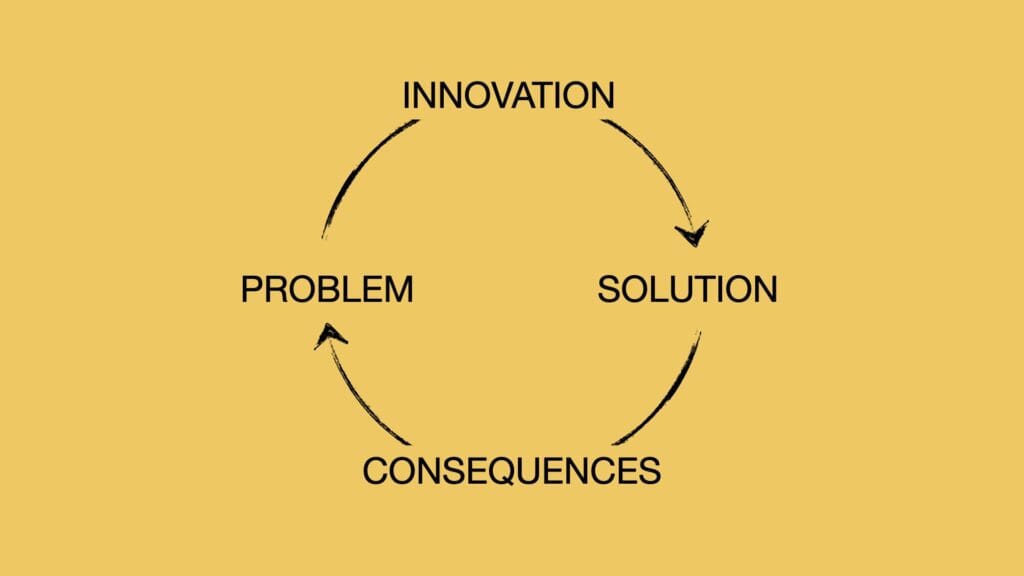
Much of humanity’s success over the past ten thousand years has been down to our ability to solve problems. We’ve become incredibly good at using a process where, when we’re faced with a problem, we innovate—and through innovation, we find solutions to the problem.
This process has taken us as a species through incredible changes in what we can achieve. But there is a dark side to this feat of human ingenuity, and it’s this: For every solution to a problem we come up with, there are consequences. And these consequences in turn spawn the next generation of problems we face. As a result, we find ourselves caught in a seemingly never-ending problem-innovation-solution-consequences-problem cycle.
One consequence of this is that almost every challenge we currently face as a society has its roots in a previous solution to an earlier problem. You can see this in many areas—advances in agriculture over the past ten thousand years is just one example, where if you look back, it’s easy to see the incredible things we’ve achieved in terms of learning to use the land to feed a growing population; and yet almost every advance we’ve made, from farming to selective breeding, to the green revolution, to the use of pesticides has led to a new set of problems.
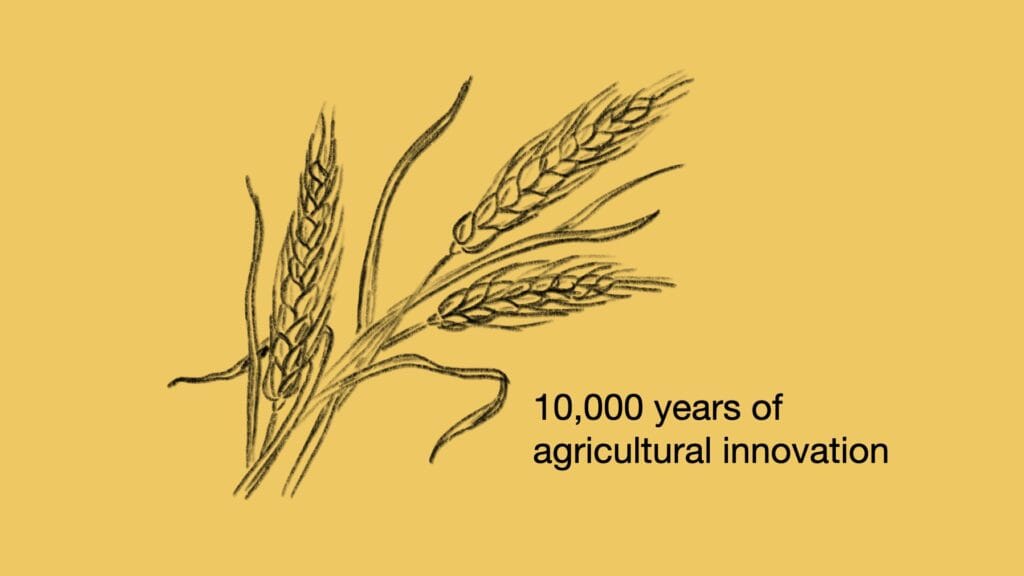
As a result, we now have an incredibly complex global landscape of solutions and problems associated with agriculture where so many of the challenges we face are due to previous innovations that seemed a good idea at the time.
Now, this isn’t necessarily a bad thing. If you map out “progress” in human society over time (however you define it) trends emerge that indicate that, on average, we’ve managed to innovate our way out of problems to such a degree that we’ve been able to keep several steps ahead of the consequences of our actions (although of course “average” hides a multitude of sins in the tails of the distribution). As a result, there’s been a general increase in our ability to live long, healthy and fulfilled lives—again on average—over the past several thousand years.
This has been possible to a large extent because we’ve been operating in a domain where the timescales associated with the consequences of innovation have been significantly longer than the timescales associated with our abilities to innovate our way out of problems.
This is a domain that’s characterized by negative feedback loops, where through innovation and problem-solving we’ve been able to quite effectively damp down the consequences of our actions through further innovation.
It’s also a domain that’s associated with somewhat intuitive and linear associations between problems and solutions. As a result, simple innovation models have worked reasonably well—models that, for instance, have a built-in assumption that if and when things go wrong, we’ll be able to fix the resulting problems in the next round of innovative problem-solving.
And it’s a domain where trial and error have consistently been shown to be an effective problem-solving technique, as there’s always time to learn from “trials” that don’t quite work as expected.
Yet this domain of fast innovation and relatively slow consequence timescales cannot last forever. There will come a point where we start to innovate so fast that the consequences of our innovations begin to pile up faster than we can find solutions to them. And this raises the question of what happens when we move from a domain that’s dominated by the timescale of consequences being greater than the timescale of innovations that address them, to one where the timescale of the consequences of our actions becomes smaller than the time it takes to “fix” them through another cycle of innovation?
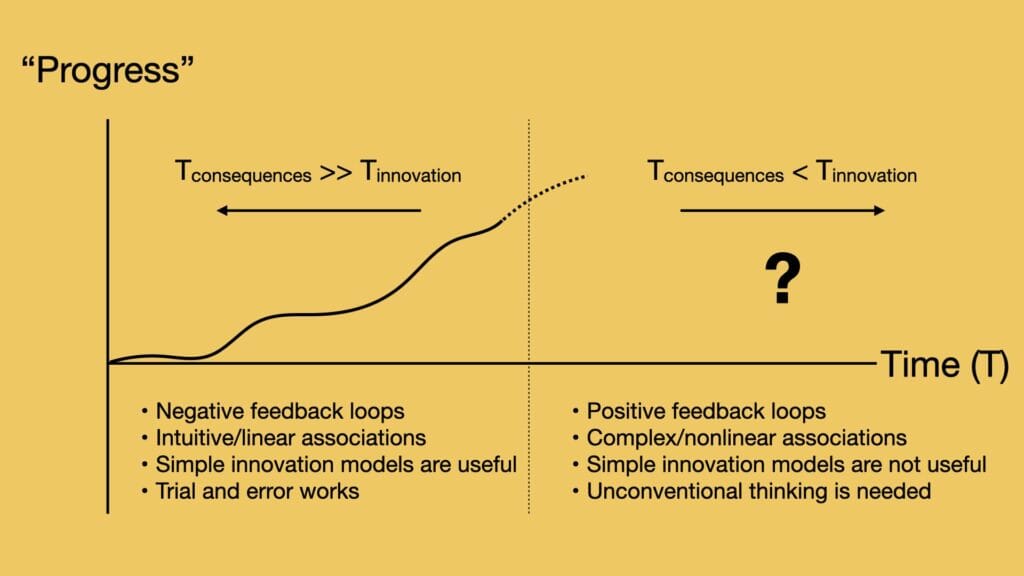
This is not a hypothetical question. We’re now entering this domain, and as a consequence, we’re beginning to find that conventional assumptions around problems, innovation, and solutions, are not serving us as well as they once did. There are many examples of where we’re seeing the results of this flipping of the innovation-consequences timescale equation—far too many to catalog here. They include climate change and how we’re struggling to manage the consequences of over a century of innovations, the social challenges presented by social media, the growing gap between advanced technological abilities and their safe and ethical use, and even emerging social and political movements, where we’re finding that the consequences of our collective actions are occurring far faster than our ability to innovate our way out of them.
This is a domain where we now face positive feedback loops as our efforts to fix problems end up exacerbating them and leading to bigger issues. It’s a domain that is associated with deeply complex and intertwined systems, and non-linear—and often hard to fathom—associations between cause and effect. And as a result, we need completely different approaches to how we develop and apply models of innovation within society.
In effect, simple models of innovation do not work within this domain. And as a result, we are going to have to depart—quite radically in some cases—from the types of conventional thinking that have served us in the past when it comes to problem-solving.
There is a further consequence of this transition from one innovation-consequence domain to another, and this is an increasing decoupling of solutions from the problem-innovation-consequence cycle. Whereas in the past there’s been a cyclic but closely connected relationship between problems and solutions, we’re now at a point where innovation is becoming divorced from solutions as we focus on innovation as change in general, rather than a specific type of change. In effect, we’re moving toward a problem-innovation-consequences-problem cycle where we’re so wrapped up in problem-solving and innovation that, despite the lip service we pay to responsive and relevant solutions, they’re no longer integral to the process.
This disconnect is in part a consequence of the complex systems we’re increasingly having to work within, and the positive feedback loops that occur when consequence timescales swamp innovation timescales. And it’s a disconnect that threatens to undermine efforts to build a better future.
Of course, up to this point, I’ve laid out a vision of the challenges we’re facing with very little supporting evidence. I’ve taken it as read that we’re moving into this era of out-of-balance consequence-innovation timescales. But is there really any evidence for this?
Part Two: Base Coding
So what does make this point in human history so different from any other? Well, there are many things that could be cited here—our pushing against, and in some cases overstepping, planetary boundaries; the ways in which information and misinformation circle the world at the speed of light; the seeming-accelerating growth in our technological abilities.
But there’s one aspect of where we are as a species that I believe is driving us toward a fundamental tipping point in our relationship with the future. And it’s one that is ushering us toward a profound break with our evolutionary heritage. And that is what I’ve referred to in my writing in the past as “base coding.”
To get an idea of the concept, think about your smartphone. It does what it does because of instructions that are coded in millions upon millions of ones and zeroes in its software.

This is its digital base code—the most basic code that defines what it is and what it does. Master this code, and you have mastery (within certain limitations) over the device, and everything it’s capable of.
But mess with this code without knowing what you’re doing, and you risk “bricking” your device and making it utterly unusable. Or worse, you run the risk of spreading mayhem through the systems that it’s connected to.
Of course, most of us have an intuitive grasp of this. As a species, we literally invented cyberspace and the base codes that it’s built on.
So that gives you a sense of base coding from the world of cyber. But how about the physical world we inhabit? Are there parallels to digital base code here that in some way define or modulate the realities we experience?
The answer, of course, is yes there are. We’ve known for over half a century that DNA–or rather the base pairs that make up DNA–represent a form of base code that forms the basis of all living things.
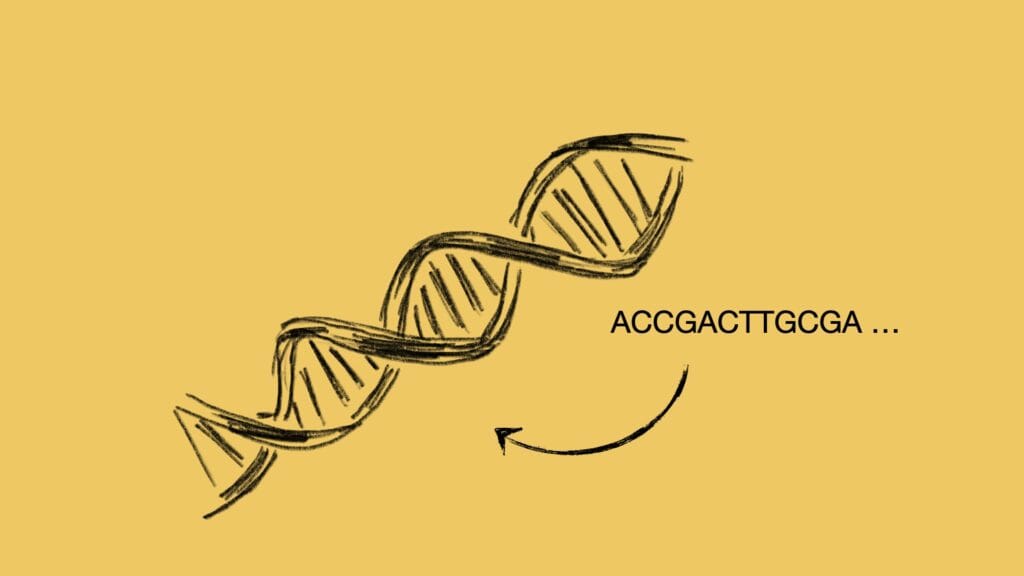
Here we need to be careful that we don’t fall into the trap of assuming DNA is the biological equivalent of digital code–it’s not. The base code that’s represented by DNA is an incredibly complex and multidimensional coding environment that has its own deeply complex rules and idiosyncrasies. And yet, it is still a base code—a fundamental set of instructions that are at the core of all living organisms. This is a base code that we’re beginning to master. And as we do, we’re breaking away from many of the limitations that evolution has imposed on us.
This is a profound step for humanity to be taking, and it’s taking us toward a tipping point in our history that’s hard to overstate the significance of. It’s a step that is incredibly exciting in the opportunities and possibilities it opens up. But it’s also a step that’s fraught with danger. Drawing on the analogy with digital base coding, what if we inadvertently “brick” a biological organism, or a whole ecosystem? What if we end up crashing our own biology as we meddle with a base code that we don’t fully comprehend?
Then there’s the physical world around us, the world of materials and machines. Is there an equivalent to digital and biological base code here?
Once again, the answer is yes, although again, the code has its own distinct rules and parameters. And this is the base code of atoms and molecules.
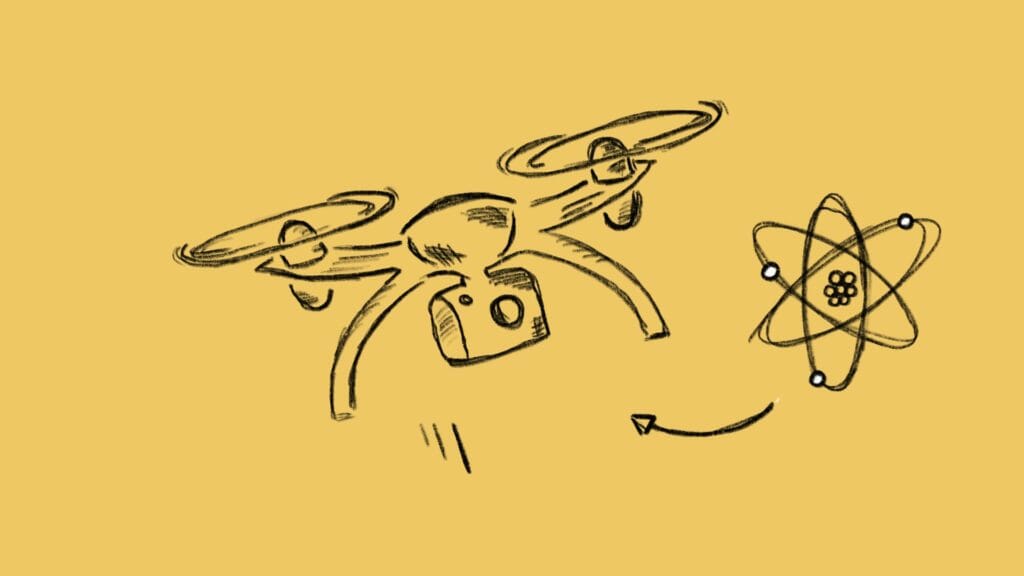
Over the past hundred years or so, we’ve made amazing strides in understanding how the properties of everything around us are determined by how the constituent atoms and molecules are put together. And over the past 20 years, we’ve become increasingly adept at arranging these atoms and molecules in ways that profoundly alter the nature of the materials we use. In doing this we are, in effect, learning to code with the most basic building blocks of the physical world around us. And as we do, we are getting closer to creating materials that have never to our knowledge existed in the history of the universe.
Of course, materials base coding is a little more complex than I make it sound here. And as with DNA, straightforward analogies with digital base code don’t work. But the reality is that, through nanoscale science and engineering, we are learning how to base code in the stuff that the world we inhabit is made of.
This growing ability to control the physical, biological and cyber domains we are a part of heralds a profound shift in our capabilities as a species as it marks a departure from hundreds of thousands of years of human evolution. But this isn’t the really big game-changer here.
What is, is our ability to “transcode” between these three domains of base coding.
By this, I mean our ability to transform how we code biology for instance through transcoding between bio and cyber. Or the ability to invent new materials through a combination of material and cyber coding. Or to create intelligent machines through a merging of all three.
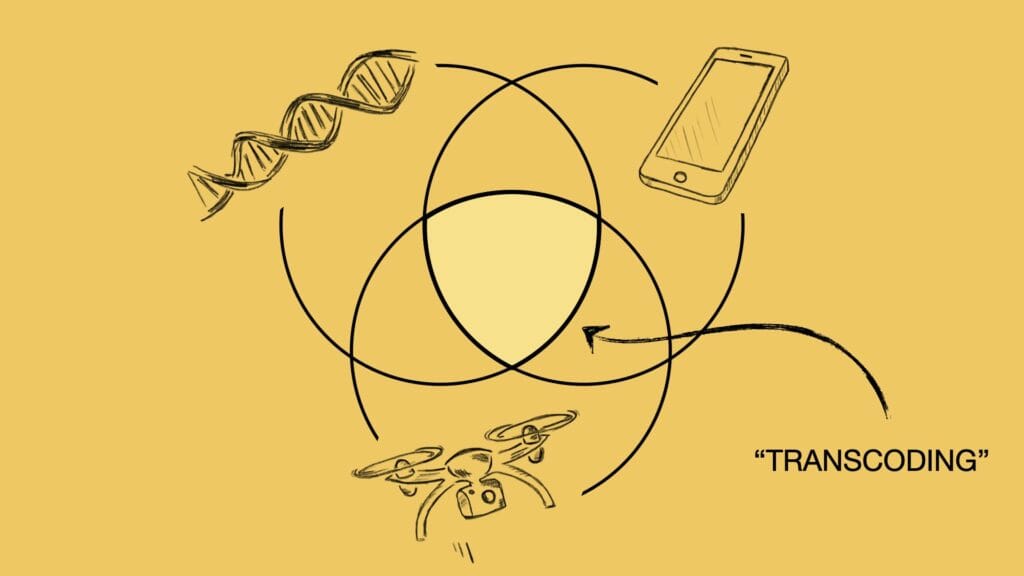
It’s this ability to transcode between base codes that is truly changing the future pathways that lie in front of us. It’s also challenging us in how we think about the consequences of our actions, as the speed with which those consequences propagate begins to vastly outstrip the timescale of conventional innovation cycles.
And this is where we need a much better understanding of what it means to live in an age where bright ideas, good intentions, and “sciencing” our way out of problems, are no longer enough to ensure a better future.
Part Three: The Paradox of Bounded Infinities
So how do we approach this challenge?
One way that opens up intriguing possibilities is approaching it from the perspective of the paradox of bounded infinities. This is a framing that both gives a sense of where the limitations are of conventional thinking, and that helps actively work toward breaking away from their grasp.
But what is this paradox exactly? To set this up, it’s important to recognize that we live in a world of infinite possibilities, but that these possibilities don’t necessarily include the ones we need to thrive in the future.
This is the paradox of bounded infinities, and it’s one that we need to take seriously if we’re to ensure that we have what it takes to thrive in the future we face together.
To help make sense of this, imagine you live in a universe that only contains odd numbers. There are, of course, an infinite number of odd numbers. And as a result, if you lived in this universe, you’d have access to infinite possibilities.
But what if the future you aspired to depended on you having access to even numbers?
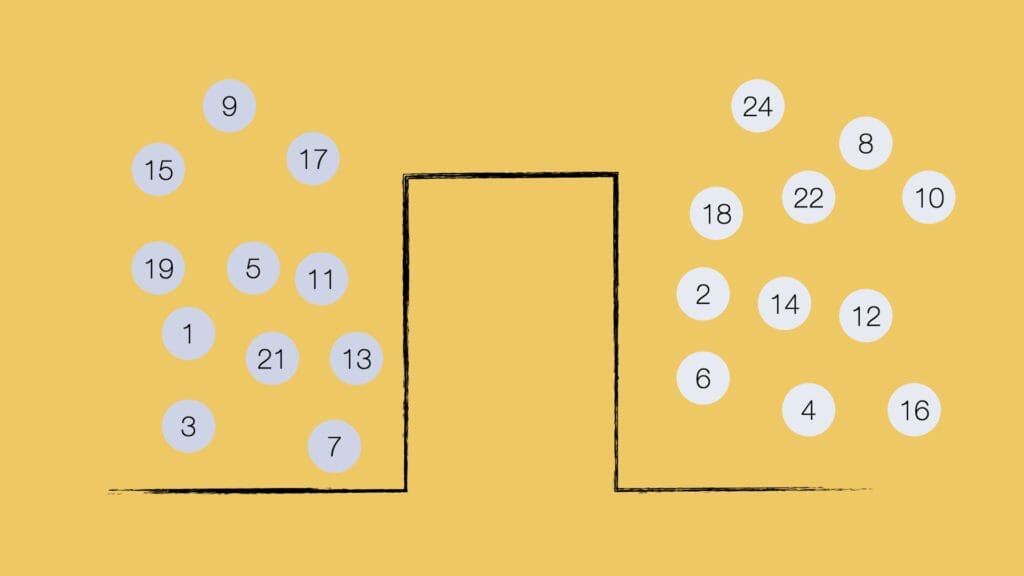
The universe of even numbers is also a universe of infinite possibilities. But it’s utterly inaccessible to anyone living in the world of odd numbers. At least, it is if you are constrained by conventional rules of math.
This is a problem if the possibilities we require to build the future we aspire to lie in the metaphorical realm of even numbers, while we’re stuck in the universe of odd numbers.
This is, of course, a crude analogy. But it’s one that is nevertheless highly pertinent to how we think about thriving in the future. And it forces us to think how we might move between a universe of infinite but inadequate, possibilities, and a universe of possibilities that enables us to build a more just, equitable, and vibrant future?
Or to be more pointed: how do we break out of the shackles of conventional thinking as we face a future that’s radically different from the past?
The answer, in part, lies in the concept of metaphorical quantum tunneling.
Part Four: Metaphorical Quantum Tunneling
Here, I’m borrowing liberally from my physics past to draw on the concept of quantum tunneling. And here I need to be very clear that I am using this as a metaphor, no more.
The interesting thing about actual quantum tunneling is that it provides a mechanism by which objects—usually atomic and subatomic particles—are able to break through barriers that are impenetrable according to the classical laws of physics. In effect, it’s a mechanism that allows movement between sets of possibilities that is conventionally not allowed.
Drawing on this, we can imagine an analogy that extends to the idea of bounded infinities where, under classical or conventional thinking, we find ourselves stuck in a world of infinite but limited possibilities.
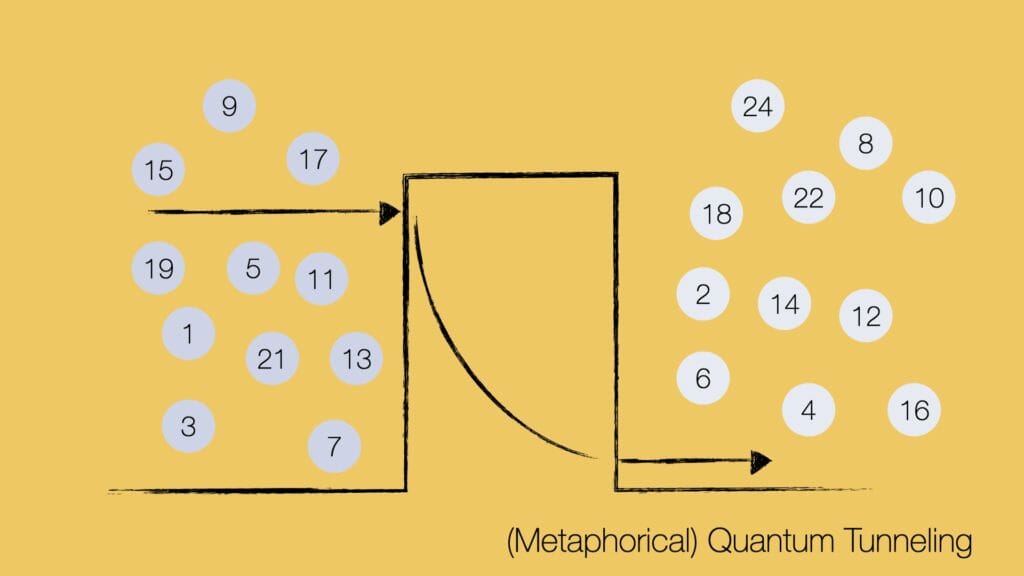
In essence, you can imagine us trapped in an odd-numbered world, imprisoned there by our conventional ideas. We can do anything we like, as long as it involves odd numbers.
But what if we could somehow break through the seemingly impossible-to-breach barrier between the infinite set of possibilities we have access to in this metaphorical world, and the possibilities we need to build the future we aspire to?
This is remarkably similar to a conundrum that physicists faced in the early 1900s. Classically, if something is constrained to a specific domain—an electron say, or an atom in an energy well—it cannot escape beyond the barriers that confine it.
Yet through non-classical physics, we learned that the phenomenon of quantum tunneling can lead to a small but finite probability of seeming-constrained entities breaking the bounds of their conventional prisons.
And at the risk of pushing the analogy to breaking point, this begs the question: is there a metaphorical equivalent of quantum tunneling that we can use to break free of the bounds of conventional thinking as we face a future that’s markedly different from the past?
And the answer, thankfully, is yes!
To explore this more fully, let me move from one-dimensional to two-dimensional bounded infinities, remembering still that this is simply a thought exercise that is stimulated by the ideas of bounded infinities and quantum tunneling.
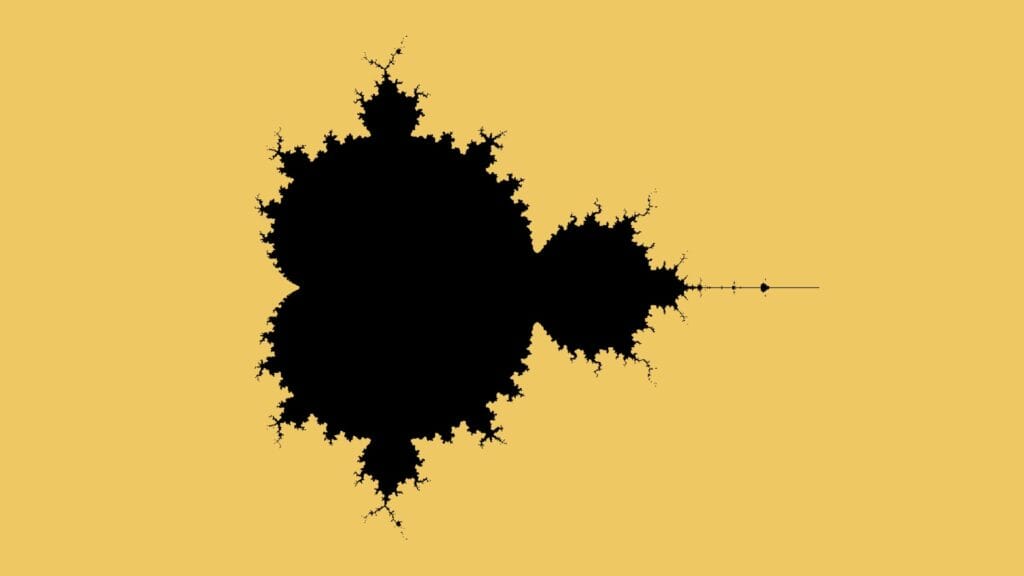
Here, I’d like to move the bounded infinity analogy from the universes of odd and even numbers to the two-dimensional world described by the Mandelbrot set. This, as many of you will recognize, is a fractal form beloved of mathematicians and coders in the 1980s. It’s one that represents a plane of infinite possibilities that are nevertheless bounded by an infinitely long perimeter.
If you are within the black area in the image above, there are infinite possible locations—this is the nature of fractal space. But you can never venture out into the surrounding yellow space.
Now, imagine that this fractal plane of infinite possibilities is the innovation space we currently inhabit. It represents everything we can do through our increasingly impressive science and technological innovation. But it’s also bound by the conventions of how we think and act.
In other words, we have access to infinite possibilities—but we don’t have access to all possibilities.
Next, imagine that in order to thrive in a future that’s dominated by base coding, the ideas, insights, and capabilities we need lie within a parallel bounded infinity. You can imagine this as a second fractal plane that lies above the first, and yet is separated by a barrier that is impenetrable through conventional thinking alone.
Now the question becomes one of how we get from the metaphorical plane we’re currently in, to the one where we need to be in order to build a better future?
Or to be more specific, how do we throw off the shackles of conventional thinking, and metaphorically quantum tunnel to a new plane of infinite possibilities?
What’s interesting about this conceptualization is that this is actually something we’ve been doing as a species for thousands of years. Whether we’re looking at faith-traditions—Buddhist koan for instance—to jolt us out of the ruts of conventional thinking, or how the arts and humanities reveal new ways of understanding our relationships with past, present, and future, or even alternate ways of knowing and understanding, we have a rich history of ways of escaping from the limitations of the plane of infinite but inadequate possibilities we find ourselves in.

But here’s the rub. For over half a century, the ways we think about science and technology, about innovation and progress, and about education, have weakened many of these mechanisms. As we’ve become seduced by living in the fractal plane of formalized science and technology, we’ve substituted what we need to do to thrive, with what we can do. And we’ve built institutions and pedagogies on the assumption that, if only we look hard enough, we’ll find the solutions to the problems we face within the bounded infinity we inhabit.
Sadly though, as we face the game-changer of base coding, we cannot afford to live under this illusion if we’re going to thrive in the future.
Part Five: The Art of Serendipity
So how do we empower people to be metaphorical quantum tunnelers as we strive to build a better future? There are, of course, many ways of developing these quantum tunneling skills. But one that’s fascinated me for many years now is how the juxtaposition of seemingly unrelated ideas can jolt us out of conventional ways of thinking.
This is exactly what I set out to achieve in much of my writing, and my latest book Future Rising is a good example of this.
Here, I must confess that, when I was approached to give this lecture, I was asked to talk about this particular book. And that is actually what I’ve been doing—but in a rather roundabout way. And I say that because Future Rising was specifically conceived and designed to catalyze metaphorical quantum tunneling in its readers.
The book itself is a mosaic of sixty short and often deceptively simple reflections which are inspired by the nature of our relationship with the future and our responsibility to it. Individually, they introduce the reader to new ways of thinking about their relationship with the future. Collectively, they intertwine ideas and perspectives in novel ways that are intentionally meant to stimulate the serendipitous emergence of new perspectives.
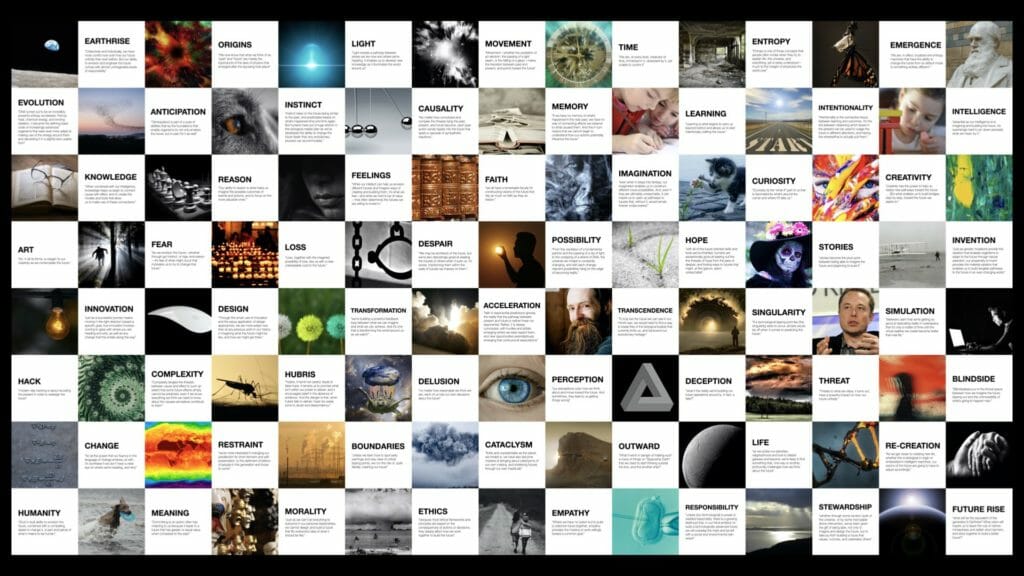
In this way, the book sets out to be a “quantum tunneling enabler” – something that jolts readers out of constrained ways of thinking, and opens their eyes to new possibilities.
Of course, this is just one example of such enablers—there are many others. The challenge though is developing metaphorical quantum tunneling enablers that have reaching and lasting impact—including in higher education. Which of course is at the heart of these Frank Rhodes lectures.
As we continue to massively expand our ability to design and transform the future as a species, we’re going to need to get much better at metaphorically tunneling between planes of infinite possibilities, and seeing pathways forward to building a future that is more just, equitable, sustainable and vibrant for as many people as possible, rather than simply being different from the past.
This is a profoundly important challenge as we stand on the edge of tomorrow and look out toward what the future might become. And it’s one that we can ill-afford to ignore.
But given the focus of this lecture series, what does all this mean for higher education?
Part Six: The Future?
In the spirit of taking on the role of quantum tunneling catalyst, I want to leave you with three questions here.
The first is this: If we buy into the idea that we’re approaching a step-change in our ability to modify and re-write the “base code” of the world we inhabit, how do we educate future graduates to be informed, effective and responsible “base coders?”
This is a substantial challenge. It’s one that will require maintaining much of the deep knowledge associated with traditional disciplines, as this is what underpins our base coding skills and abilities. But we’ve also got to get better at transcending these disciplines, and training our graduates to think and act in ways that are profoundly different from how we’ve done so in the past.
The second question is: How do we enable our graduates to be impactful metaphorical quantum tunnelers? How do we ensure that they don’t get stuck in the ruts of conventional thinking, but rather transcend these ruts and find innovative ways of understanding our relationship with the future and how we can become effective architects and builders of that future.
These first two questions are still stuck in the domain of formal education though. And one of the more complex challenges we face is that, if we take the idea of the future as being radically different from the past seriously, we’ve also got to think about the very nature of educational establishments we maintain and the degree to which they potentially act as a barrier within society to people developing the skills and insights they need to build a better future by inhibiting movement between different domains of infinite possibilities.
Because of this, the third challenge is: How do we metaphorically quantum tunnel beyond the walls of formal higher education to empower everyone who wants to be a part of building a future that is radically different from the past?
To do this would mean fundamentally questioning the nature of the academy and educational establishments. It’s a tough challenge. But it’s an incredibly important one if we want to move away from the elitism that still shrouds higher education, and toward modes of learning that have the potential to empower anyone who’s interested to be part of a positive future-building enterprise.
The bottom line here is that we are changing the world faster than we understand how to deal with the consequences of our actions. And to navigate through the challenges this creates, we’ve got to change our mindsets, change our skillsets, and change the ways that we think about the future. If we don’t we risk becoming victims of our own inventiveness.
And here I’d like to return to Laurie Lee. At the end of the passage I started with from Cider with Rosie, he observes the horse’s “eight miles an hour was the limit of our movements, as it had been since the days of the Romans. That eight miles an hour was life and death, the size of our world, our prison.”
That conventional technology that had served society so well for so long—the horse—had effectively become a prison for people who were striving to build a different future; and one that imprisoned their minds and ways of thinking and imagining, as much as their day-to-day existence. A hundred years later, I have to wonder whether the conventional ways we think about science, technology, and innovation have become our prison: A prison that keeps us to a metaphorical eight miles an hour in a world where this simply cannot get us to where we need to be heading.
If they are, surely one of the greatest challenges we face is how to break free, and learn how to build the future we aspire to rather than the one we’re otherwise destined for.
Thank you.
____